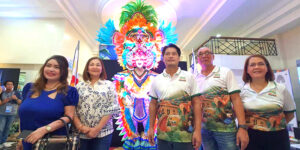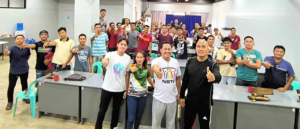
One social media post of a mother infuriated me. She posted a photo of her 12-year-old daughter clad in a two piece made of sheer or very fine fabric that almost looked like undergarments. What made matters worse was making her post public.
What in the world was she thinking?!
Whatever her reason was for posting that photo of her girl wearing such translucent garments on socmed, clearly, keeping her child away from online predators was not on top of her mind. Or maybe, we can blame it to ignorance or, the lack of awareness on cybercrime. Predators seek social media sites where photos of children are posted. They go to these sites in hopes of finding their next victim. When you post a photo of your child, anyone who has access to it can easily download the image, save it and even alter it. We do not want the photos of our children fall into the wrong hands.


Parents should set boundaries about spaces their children visit and content they expose themselves too because mothers and fathers are the first to have the power to act on behalf of their children and ensure their rights are respected.
That is why my column today is devoted to a cause that every parent must get involved in: web safety of children.
Did you know that 2 million Filipinos aged 12 to 17, fell victim to online sexual abuse and exploitation in 2021 alone? This data is contained in a report from UNICEF. Isn’t it alarming?
Nineteen-year-old Jayson Yañez, an advocate against online sexual abuse or exploitation of children (OSAEC) pointed out that online exploitation is rampant because cases are going up and the number of victims continue to increase, but sadly, there are very few cases reported.
But, it is good to know that there are already organizations and individuals working closely in order to protect children from sexual exploitation and abuse online.
I was among media practitioners invited to the launch of ChildFund Philippines’ Web Safe and Wise on February 10.
The campaign encourages the country’s private sector and media to help protect children from online threats.
During the virtual launch, ChildFund Philippines emphasized that all sectors must work together “in empowering children and the youth to benefit from digital connectivity while being protected from sexual exploitation.”
Anand Vishwakarma in his speech said their organization aims to build and sustain partnerships with critical sectors to protect children from digital dangers.
“With the launch of Web Safe and Wise campaign, we will now focus on the roles the private sector and media could play to complement government efforts, to make online spaces safer for children. It is important to be a catalyst, to be a multiplier in this situation,” added Vishwakarma.
An advocacy like this needs the help of youth advocates and partners who are passionate to work on these issues in all the relevant platforms. The media has a critical role in this initiative.
Ariel Sebellino, executive director of the Philippine Press Institute stressed that “as de-facto bearers and de-facto historians, members of the media contribute to shaping knowledge and decisions of the child growing up”.
“It is expected of the media to provide accurate vetted and truthful information to hone critical thinking,” stressed Sebellino.
Among topics given focus during the discussions was Republic Act 11930 or the Anti-Online Sexual Abuse and Exploitation of Children (OSAEC) Act which is a landmark law that is one of the first of its kind in the region. It is the hope of ChildFund and its partners to foster digital literacy among Filipino children and youth while protecting them from harmful online content and perpetrators.
Quick facts presented to attendees during the launch revealed that 50 percent of surveyed Filipino children use the internet without supervision and that they can fall prey to 750,000 sexual predators lurking on the Internet to connect with possible child victims from different parts of the world. It was found out that boys are just as at risk as girls to digital dangers. Additionally, 13.1 percent or one in every 10 children asked, reported that they have seen or received sexual messages, video, or images they do not want, while 7.9 percent of kids surveyed in the country reported having been asked for a photo or video of their private parts by someone online.
“We want to see a digital world where every Filipino child enjoys a safer and better online environment free from all forms of online abuse, exploitation and violence,” shared Allan Nuñez, advocacy specialist of ChildFund Philippines.
There will be dialogues, consultations with children and the private sector, webinar series, media training sessions and community activities that protect children online and safeguard them from age-inappropriate content across platforms and providers.
I share what he said is every advocate’s dream: “to see a digital world where every Filipino child enjoys a safer and better online environment that is free from all forms of online abuse, exploitation and violence.”*







